Tech Tip: Cable Maintenance 101
Maintaining your motorcycle is an important job. Not only so that your bike will live a long life, but also so that it works at its optimum. Everyone knows the basic, really important tasks, like changing your oil, making sure your tires are in good condition, cleaning and oiling your chain, etc.
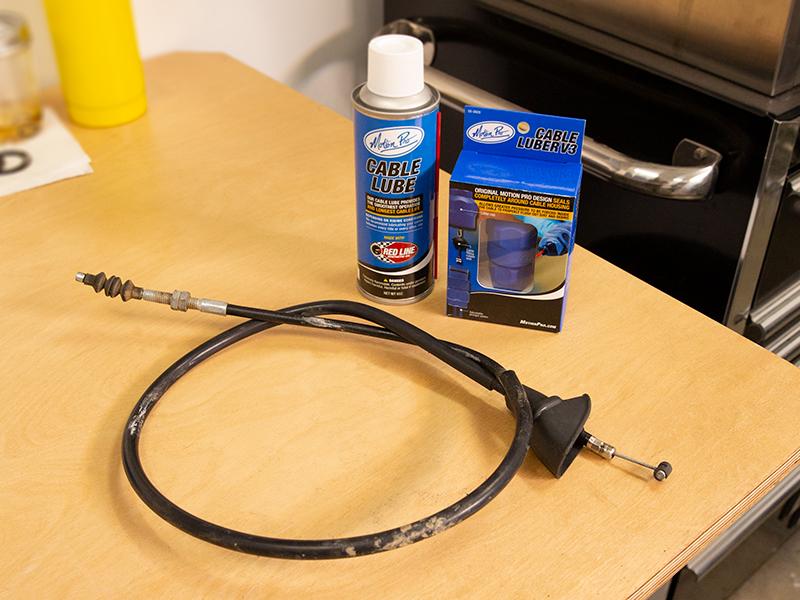
There is one very important maintenance task that a lot of people overlook. That's the process of maintaining your throttle, clutch and other control cables. Most people don't give much thought to the controls of their bike, but it is one of the most important parts of your bike, and well-maintained controls can make riding a lot more fun. On the other side, neglected controls can be downright dangerous, or leave you stranded with a broken cable.
Doing the work to maintain your controls and cables is pretty simple work; it just takes a small investment in time, and a little familiarity with some easy procedures. The frequency of maintenance will vary depending on the type of riding you do, what kind of bike you have, and what sort of conditions you ride in. A dirt bike that gets ridden hard in dirty or muddy conditions will need much more maintenance than a street bike that just gets ridden on sunny weekend days. A good rule of thumb is to at least start the riding season with a good maintenance overhaul. Start with the cables, and then go from there. A street bike may only need this work once a season, a dirt bike may need it every other ride, or maybe every ride!
These procedures also apply to new replacement cables. Most replacement cables are sold without any lubrication, it is critical for their proper function and long service life that cables are properly lubricated.
Remove the Cables
First thing you have to do is remove the cables from your bike. Always refer to the factory service manual for your model motorcycle for these procedures. Getting any part of the disassembly or assembly wrong could result in a stuck throttle or a non-functioning clutch, both of which are extremely dangerous.
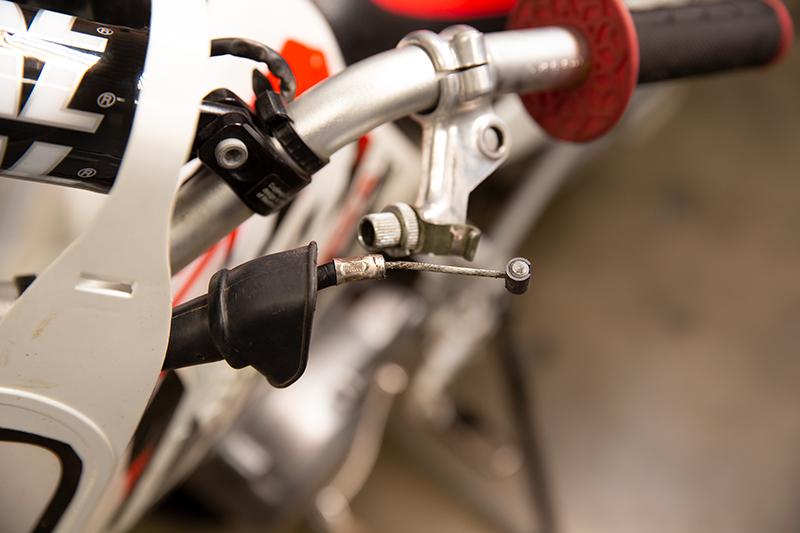
You service manual will also have detailed specifications about cable adjustment and in some cases, proper cable slack, which is also critical to the proper and safe function of your motorcycle.
For all cables, the first thing to do is to clean up the housing, and inspect the cable for any wear. If the housing is worn to the coil winding, or one of the fittings is damaged or worn, this is a good time to think about some new cables. If they look good, the next step is to relubricate the inner wire.
Lubricating the Cable
Lubricating the wire inside the housing will make it slide more smoothly, and will also extend the life of the cable by reducing friction Motion Pro makes an excellent Cable Lube, and also a Cable Luber V3 to make this job as easy as possible.
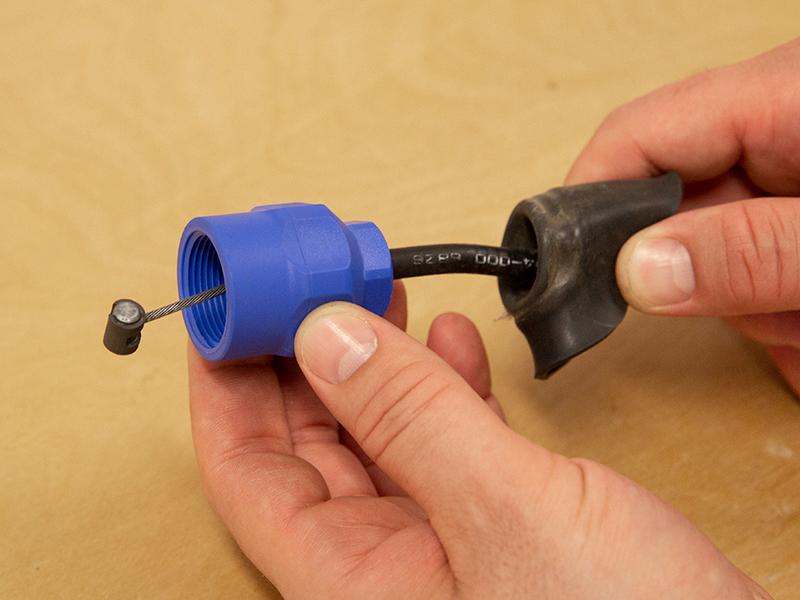
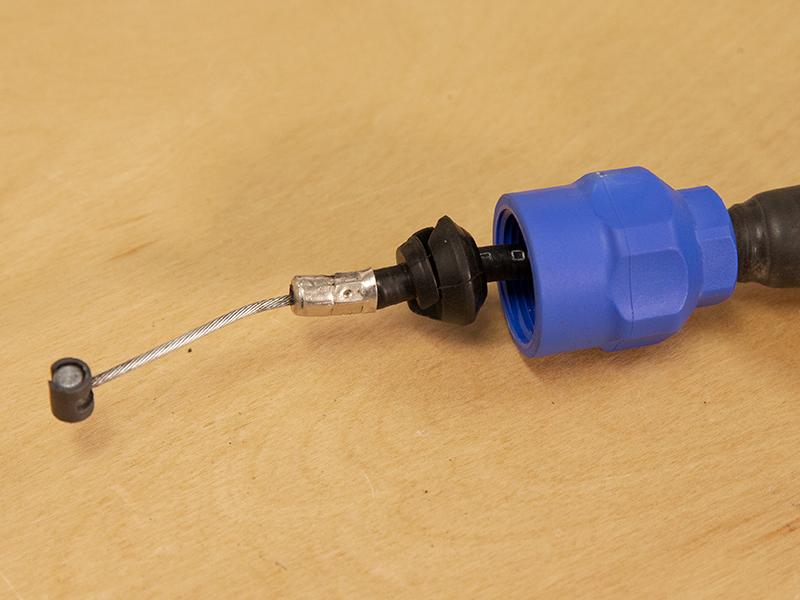
Needless to say, lubing cables is extremely important and having the right tool makes the job less of a pain. Until now it was a messy job and lots of lubricant was wasted in the process. The Cable Luber V3 unique design seals all around the cable housing and the adjustable plunger ensures that lube is efficiently coating your cable inner wire.
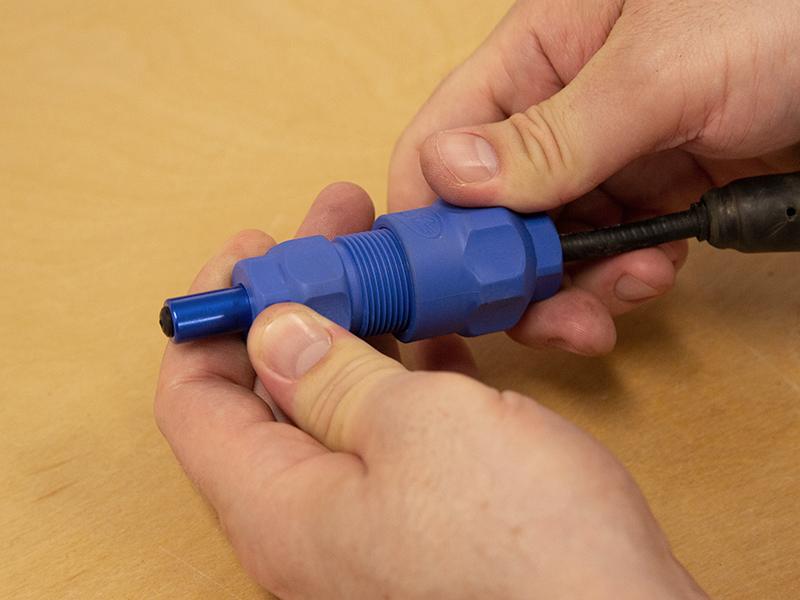
That is the main job to be done with the cables removed, and if you want to short cut this process some, you can just remove the cables from the controls, and then lubricate them while they are still in place on the bike, but this will keep you from doing a thorough inspection of the cables.
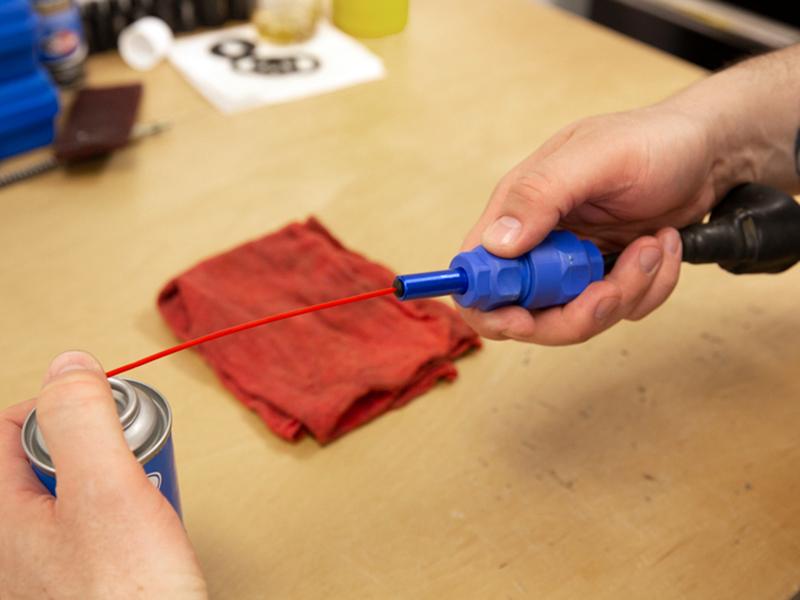
Re-install the cables
When reinstalling the cables, there are a couple of very important things to do. One of the most important is to properly clean and lubricate any pivot points, like the clutch cable barrel in the clutch lever on the handlebar, and the throttle cable barrels in the throttle tube. If these points are not clean and lubricated with high quality grease, they can bind, which will cause the cable to flex and prematurely wear and fail. Lubricating these points will also result in finer feel and control, making your interface with the bike more sensitive. While you are at it, remove the clutch lever, and regrease the pivot there also, so it is working at its smoothest. This also applies to the brake lever, so that it works as smoothly as possible.
When adjusting the cables, refer to your service manual for the proper free play adjustments, as a throttle cable that is too tight can cause engine revs to rise when the bars are turned, causing an unsafe condition. If a clutch cable is too tight, it can cause the clutch to slip, and if too loose, shifting can be difficult. A note on the adjusters on a cable: Don't over tighten the adjuster fitting. They are hollow, so that the wire can pass through, and only need about 8 ft-lbs of torque to properly secure them. Over tightening the adjusters can cause them to crack and fail.
On most bikes, all of these jobs should only add about a half an hour of work to your garage time. It's time well spent to make sure your bike is performing at it's best. It will also make your riding time safer and more enjoyable.
Will the Cable Luber V3 work with my cable?
Not all cable types may be compatible with the Cable Luber V3. It is noted, the Cable Luber V3 is designed to work with cable housing diameters a minimum of 4-5 mm and maximum size of 8 mm. Review the cables fittings for proper fitment with the Cable Luber V3, the end fittings of the cable must be able to fit within the cable luber body. Cables ends containing elbows, are not compatible. Straight adjuster fittings exceeding 33 mm in length, are not compatible and will not fit within the Cable Luber V3 Body. Reference images below show critical points to review for proper fitment. Note: For non-compatible cables that do not work with the Cable Luber V3, we recommend our original Motion Pro Cable Luber, here: Cable Luber p/n 08-0182
Inspect both cable ends to determine which end is best suited for cable lubing with the Cable Luber V3. If the lubrication point is best suited at the clutch (engine side) or throttle body/carb end, we recommend removing the cable from the motorcycle and lubricate. Note: For throttle cables, it’s always recommended to remove the carb/throttle body end of the cable, then lubricate, this is recommended so no cable lube ends up in your carburetor or around the throttle body bell-crank assembly. Additionally, when replacing or reinstalling control cables, we always recommend adding grease to the barrel end of cables and pivot points.
